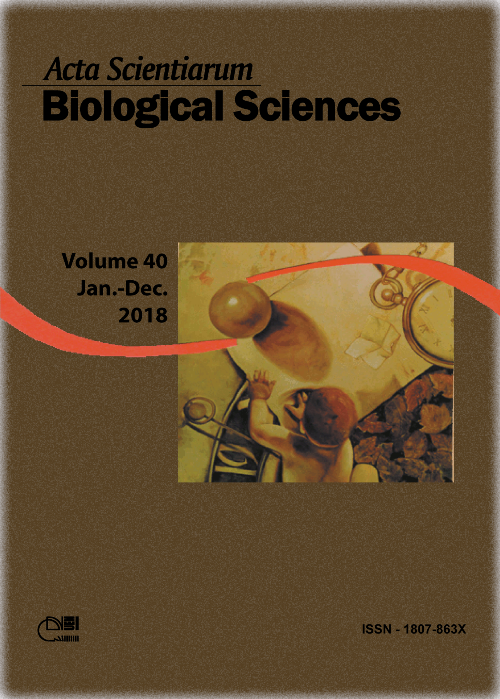<b>Anatomical description of the salivary glands: parotid, mandibular and sublingual of the crab-eating-fox (<i>Cerdocyon thous</i>)
Resumo
Descriptive anatomical studies of wild animals are fundamental, since they provide subsidies for the elaboration of more adequate techniques of sustained management, contributing to the preservation of species threatened with extinction. Thus, the aim of the study is to anatomically describe the salivary glands: parotid, mandibular and sublingual of the crab-eating-fox (Cerdocyon thous). For this purpose, three carcasses of crab-eating-fox donated by Ibama were used. The animals were fixed with 10% aqueous formaldehyde solution, dissected, analyzed descriptively and photographed. It was found that the parotid gland of the crab-eating-fox is located caudally to the branch of the mandible, in the rostroventral margin of the auricular cartilage. The mandibular gland is located in the atlantal fossa and extends to the basi-hyoid bone. The sublingual gland of the crab-eating-fox shows two parts: monostomatic and polystomatic. The monostomatics are located in the occipitomandibular region of the digastric muscle and the portion polysomatic is situated between the tunica mucosa of the oral cavity and the buccinator muscle. Based on the results, we conclude that the salivary glands of the crab-eating-fox are found distributed in the facial region and present anatomical characteristics that follow the same structural pattern described for other species of carnivorous mammals.
Downloads
DECLARAÇÃO DE ORIGINALIDADE E DIREITOS AUTORAIS
Declaro que o presente artigo é original, não tendo sido submetido à publicação em qualquer outro periódico nacional ou internacional, quer seja em parte ou em sua totalidade.
Os direitos autorais pertencem exclusivamente aos autores. Os direitos de licenciamento utilizados pelo periódico é a licença Creative Commons Attribution 4.0 (CC BY 4.0): são permitidos o compartilhamento (cópia e distribuição do material em qualqer meio ou formato) e adaptação (remix, transformação e criação de material a partir do conteúdo assim licenciado para quaisquer fins, inclusive comerciais.
Recomenda-se a leitura desse link para maiores informações sobre o tema: fornecimento de créditos e referências de forma correta, entre outros detalhes cruciais para uso adequado do material licenciado.












1.png)




3.png)













